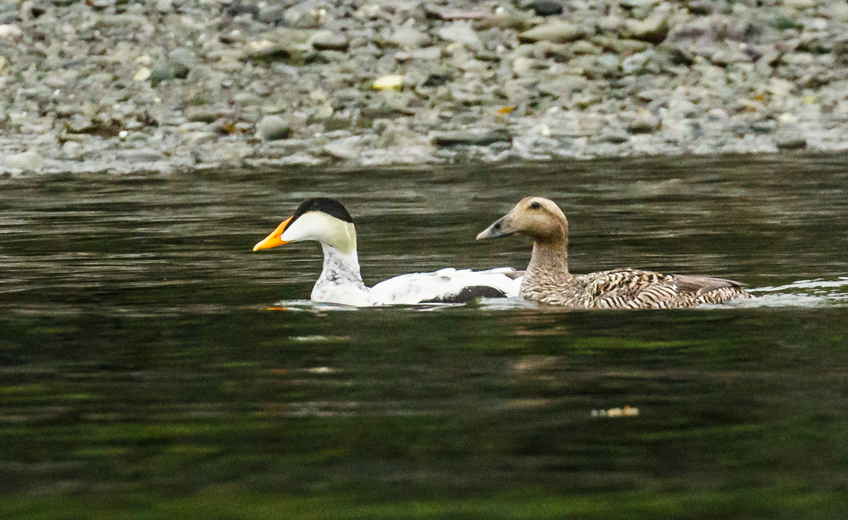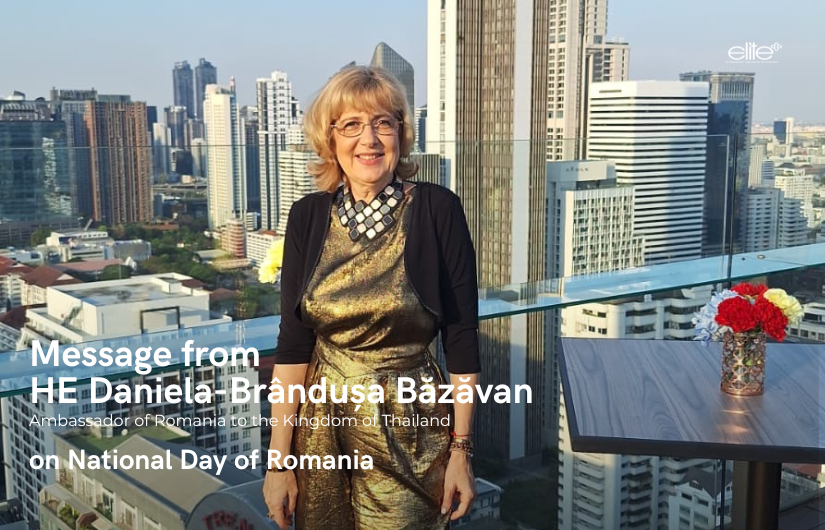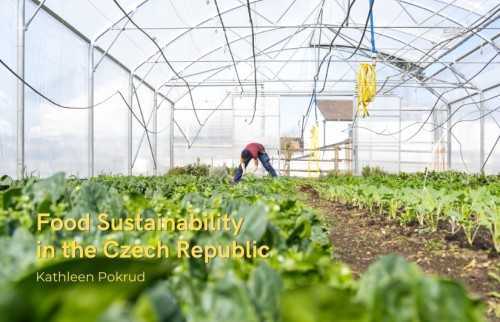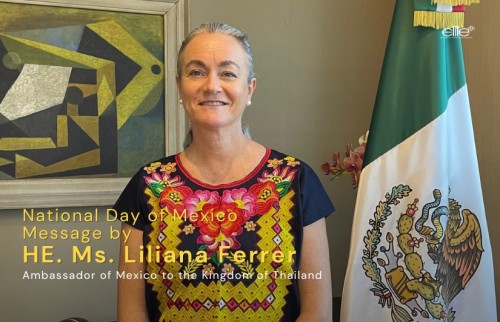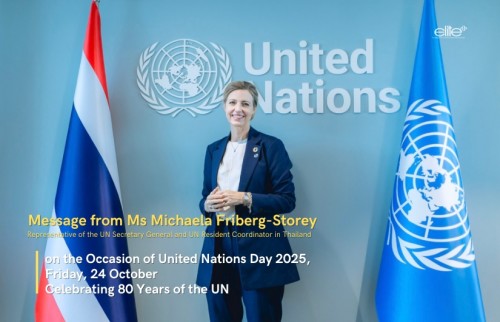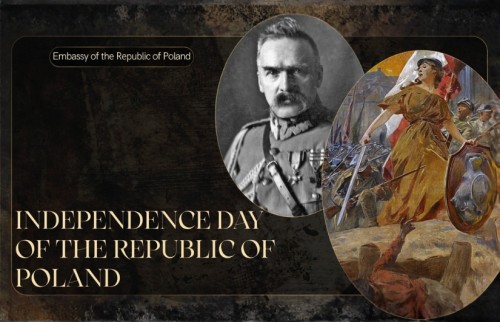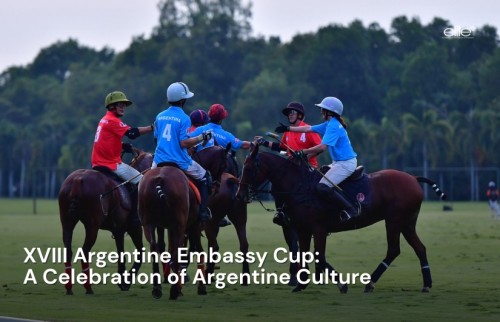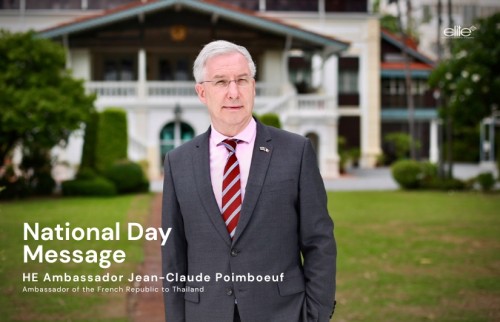After sailing along the Kamchatka Peninsula for 11 days, the Spirit of Enderby crossed into Chukotka and spent the cruise’s last 3 days exploring the wilderness and wildlife of the northeasternmost region in Russia. Chukotka is an autonomous region located in the Russian Far East covering the area of 737,700 square kilometres with the population of around 50,000; the majority of which are the Chukchi people who have settled in Chukotka for several hundred years. The principal town and the administrative center of Chukotka is Anadyr.
The expedition team of the Spirit of Enderby led the passengers on a zodiac cruise to explore the beautiful mountainous scenery of Glubokaya Bay. Again we were in the true wilderness with high ridged mountains and dense forests with a few waterfalls. Brown bears were sighted, and I was able to photograph a female brown bear with two cubs emerging from a forest crossing a field of rocks to the other side. Another species of mammals which had become a common sight in Chukotka was largha seals which seemed to follow our zodiacs everywhere.
Coming from a tropical Asian country, I was excited by the sights of those species of birds which are endemic to the subarctic area and delighted that I could bring home images of some of them such as tufted puffin, horned puffin, common eider, willow ptarmigan, and harlequin duck, all of which I had seen for the first time. As the ship cruised further north, more of those birds mentioned were spotted.
The tufted puffin, also known as crested puffin, is the largest of all puffin subspecies with the body length of 33 to 41 centimetres and the wingspan measured at 64 to 66 centimetres. The plumage is mostly black with a white facial patch. Its most distinctive features are the yellow tufts which appear on both males and females and the bright red feet. The horned puffin is a little smaller with the size of 32 to 41 centimetres and the wingspan of 56 to 58 centimetres. It has a fleshy black horn extending upwards from the eye from which it derives its name. The common eider is a large duck with the size of 60 to 70 centimetres and the wingspan of 95 to 105 centimetres. A male has white back, face, and chest, but the cap, sides, belly, and tail are black. A female has brown plumage. The IUCN has listed common eider as a near-threatened species. Common eiders inhabit the coastlines of northern Europe, North America, and eastern Siberia.
The willow Ptarmigan, also known as the willow grouse, are found in northern Europe, Scandinavia, Siberia, and Alaska where it is the state bird. Males and females are the same size with the length of 35 to 44 centimetres and the wingspan of 60 to 65 centimetres. The harlequin duck is a sea duck breeding on the ground near a stream in Russian Far East and can be sighted from North Japan to Sea of Okhotsk, Sakharin, Kamchatka, and Chukotka. It has the length of 38 to 45 centimetres and the wingspan of 63 to 70 centimetres. It’s also known by other names such as painted duck, rock duck, glacier duck, and mountain duck. It feeds on mollusks, crustaceans, and insects.
Another bird species that was sighted in large number in Chukotka were slaty-backed gulls which are endemic to East Asia along the coasts of Hokkaido, Sea of Okhotsk, Kamchatka, and Chukotka. It is a large white-headed gull with the length of 55 to 68.5 centimetres and the wingspan of 132 to 160 centimetres. Slaty-backed gulls usually form a colony building nests on cliffs of rocky islands and coasts.
The highlight of the visit to Chukotka was the landings for two consecutive days at a coastal Chukchi village called Meinypilgano. The passengers of the Spirit of Enderby went ashore after lunch to visit the museum where we learned about the history and way of life of the Chukchi people who have settled here some hundred years ago. Later we went on a walking tour of the village and ended the tour at a public town hall where we watched colourful and talented performances by the young Chukchi locals about their ancestors and the life in the tundra illustrated by dancing and singing. After the show we were treated with delicious snacks of dried fish and salmon caviar with hot tea before returning to the ship.
The next morning the ship’s expedition team divided the passengers into two groups each of which made a zodiac landing at the outskirt of the village and walked a distance to a nest of spoon-billed sandpipers (SBS) in two separate locations in the tundra near the village. We were briefed and accompanied by members of Birds Russia, an organization dedicated to looking after several nests of spoon-billed sandpipers in the area during the breeding season from May to September. During winter in Chukotka, SBS migrate annually southward to as far as Southeast Asia, including Thailand, from November to March.
SBS is a small wader with the size of 14 to 16 centimetres and is classified by the IUCN (International Union for Conservation of Nature) as critically endangered due to rapid population decline. It is very rare and breeds only in Eastern Chukotka and only 200 breeding pairs remain in the wild. It has been estimated that SBS may become extinct in 10 to 20 years.
Five years ago I became interested in SBS when I learned that it was a critically endangered species and had migrated annually from Russia to Thailand between November and March. Every year I travelled to Pak Taley, a village near the sea in Phetchburi province located about 120 kilometres south of Bangkok, to see and photograph five to seven SBS. Besides Pak Taley, two SBS had also been sighted every year in Khok Kham village in Samutsakorn province only 30 kilometres from Bangkok. In 2014, a SBS with a band on its legshowing No.05 was photographed at Khok Kham. The increasing interest in SBS prompted me and 13 Thai colleagues to embark on a cruise on the Spirit of Enderby from Kamchatka to Chukotka to see SBS in their breeding ground in July 2016. It was a trip of the lifetime for all of us although we saw only one SBS in its nest in the tundra of Chukotka. It was truly an excitement to discover that the SBS in breeding plumage guarding the nest was No.10 which was No.05’s mate. We returned home with a high hope of seeing both No.05 and No.10 in either Khok Kham or Pak Taley during this coming winter.
In mid-November I received the good news that six SBS have arrived in Pak Taley and two in Khok Kham. Due to previously committed engagements I could not travelled to Pak Taley and Khok Kham until the middle of December. I went first to Khok Kham on December 13, 2016 and was fortunate to see and photograph SBS No.05, in non-breeding plumage, foraging among red-necked stints, but no sight of its mate, No.10. I continued to Pak Taley where six SBS were sighted but they were too far away to obtain a good image.
The cruise on the Spirit of Enderby from Kamchatka to Chukotka was indeed an adventure of the lifetime that took me into the Russian wilderness confronting Kamchatka brown bears, grey whales, and large seals aside from the sighting of many species of sea birds and ducks which I had never seen before. The fabulous ending with the rare discovery of a spoon-billed sandpiper in its breeding plumage would always be remembered. The videos and the photos I and my team brought back would reflect the memories of a fantastic adventure in the Russian Far East.


